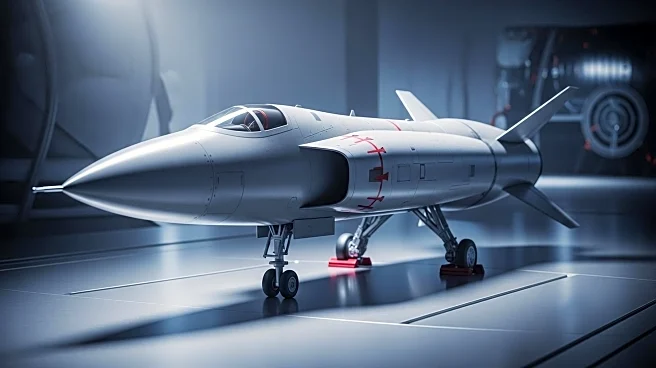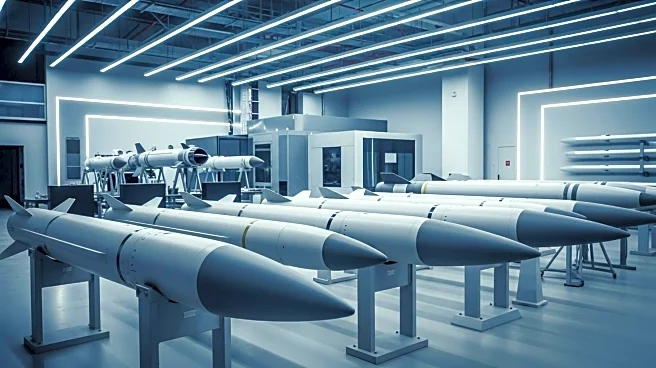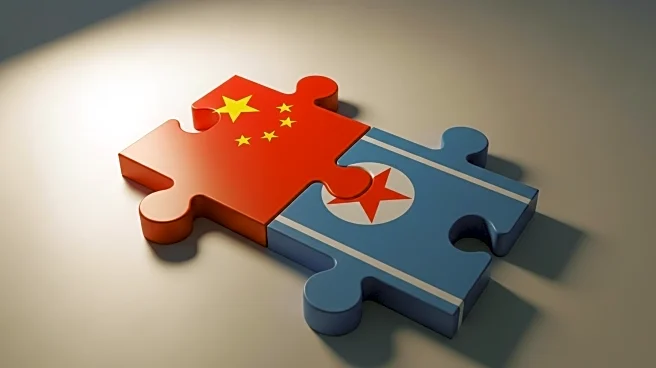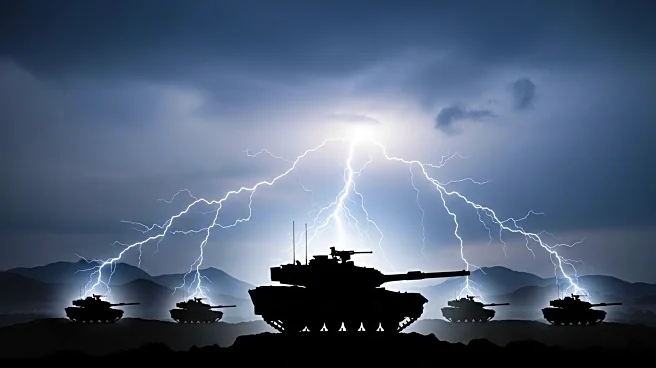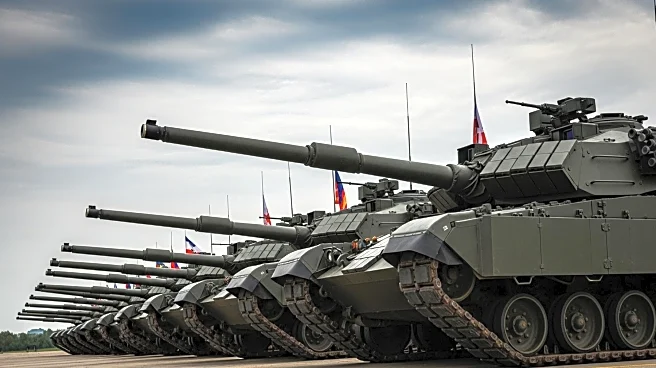What's Happening?
North Korea has made significant strides in its defense manufacturing capabilities, enhancing its missile program. Recent developments include the establishment of automated assembly-line production systems, which have increased productivity and improved the quality of missile components. This automation has allowed North Korea to advance its missile-based nuclear deterrent more rapidly than during the Cold War. The focus on modernizing conventional weapon systems and incorporating advanced technologies like AI and unmanned systems is also evident. These efforts are supported by technology transfers from Russia, despite international sanctions prohibiting such exchanges.
Why It's Important?
North Korea's advancements in manufacturing and missile technology pose a significant threat to regional and global security. The ability to produce more reliable and sophisticated weapons could destabilize military balances, particularly in Asia. The collaboration with Russia and potential exports of military technology to other countries could further exacerbate tensions. These developments challenge international efforts to curb North Korea's weapons programs and highlight the limitations of current sanctions. The situation underscores the need for diplomatic strategies to address the growing capabilities of North Korea's military.
What's Next?
North Korea's continued focus on automation and technology in its defense industry suggests further enhancements in its military capabilities. The international community may need to reassess its approach to sanctions and diplomatic engagement with North Korea. Increased cooperation between North Korea and Russia could lead to more sophisticated weapons systems, potentially affecting global security dynamics. Monitoring and addressing these developments will be crucial for maintaining stability in the region.
